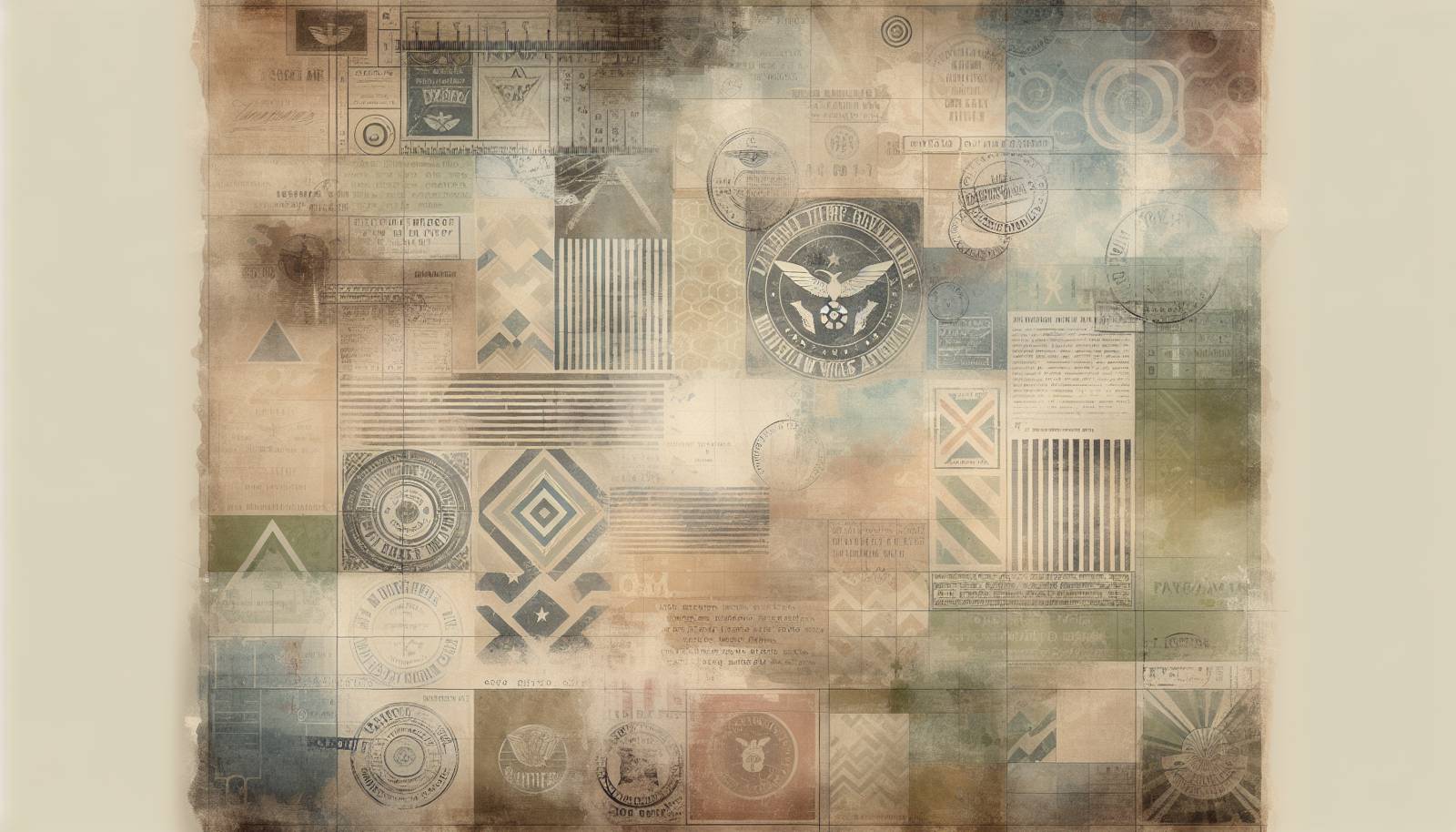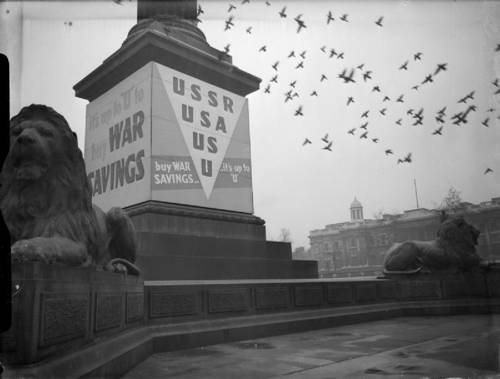
FAQ About The Influence of Wartime Posters on Visual Communication

What role did wartime posters play in visual communication during wars?
Wartime posters were crucial in visual communication as they served as an effective medium for disseminating propaganda. They were designed to persuade the public, boost morale, encourage recruitment, and manage public perception during conflict. These posters used strong imagery and slogans to convey clear messages quickly and effectively to a wide audience.

How did wartime posters influence graphic design?
Wartime posters significantly influenced graphic design by introducing bold colors, dramatic imagery, and direct messaging focused on emotional impact. This led to the development of distinct styles that prioritized clarity and urgency, often seen in modern advertising. They also helped establish principles of design, such as composition balance, contrast, and simplicity in message delivery.

What are some iconic wartime posters and their impact?
Iconic wartime posters include the U.S. 'We Can Do It!' poster featuring Rosie the Riveter and the British 'Keep Calm and Carry On'. These posters have had a lasting impact on cultural memory, serving as symbols of resilience and unity. They continue to be referenced and parodied in contemporary media, showcasing their enduring legacy in visual culture.

How did wartime posters use propaganda techniques effectively?
Wartime posters used several propaganda techniques effectively, such as emotional appeal, patriotic imagery, enemy demonization, and calls to action. By creating a sense of urgency and duty, these posters motivated people to support the war effort through enlistment, resource conservation, or purchasing war bonds. The effectiveness was in their strategic placement in public areas and their use of national symbols and slogans.

In what ways did World War I posters differ from World War II posters?
World War I posters often focused on themes of nationalism, harsh depictions of the enemy, and broad-based appeals for support. In contrast, World War II posters expanded to include themes of production, efficiency, and total war effort, targeting specific groups like women to join the workforce. The artistic styles also evolved, with more sophisticated graphics and layout designs in the latter war.

Why were posters a popular medium for wartime communication?
Posters were a popular medium for wartime communication due to their accessibility, cost-effectiveness, and ability to reach a mass audience. They could be displayed in public places, ensuring maximum visibility. Additionally, their combination of vivid imagery and concise messaging made them an ideal tool for conveying powerful messages quickly and memorably.

What materials and techniques were used in creating wartime posters?
Wartime posters were typically created using lithographic printing techniques, which allowed for mass production. They were printed on inexpensive paper to ensure cost-effectiveness. Artists used bold colors, stark contrasts, and clear typographic designs to ensure that the posters were eye-catching and conveyed their message effectively, even from a distance.

How did wartime posters address diverse audiences?
Wartime posters addressed diverse audiences by tailoring messages to specific groups, such as women, factory workers, and immigrants. They often used varied languages and culturally relevant symbols to resonate with different segments of the population. This approach ensured that the mobilization efforts were inclusive and addressed the specific needs and contributions of various community groups.

Who were some notable artists involved in creating wartime posters?
Notable artists involved in creating wartime posters included James Montgomery Flagg, who designed the famous 'I Want YOU for U.S. Army' poster, and J. Howard Miller, known for 'We Can Do It!'. These artists utilized their skills to craft compelling visuals that have become iconic representations of wartime propaganda.

How have wartime posters influenced modern advertising?
Wartime posters have influenced modern advertising by demonstrating the power of visual storytelling and emotional appeal. Many contemporary advertisers adopt the use of bold graphics, impactful slogans, and targeted emotional hooks pioneered by these posters. The strategic use of imagery to connect with audiences during times of need is still a relevant tactic in marketing today.

What psychological techniques were used in wartime posters to influence public opinion?
Psychological techniques used in wartime posters included appealing to emotions such as fear, pride, and nationalism. By creating a sense of danger or showcasing the honor of serving one's country, these posters played on public sentiments to drive action. The use of authoritative figures and patriotic symbols further reinforced the credibility and urgency of the messages presented.

How did wartime posters contribute to the war effort beyond recruitment?
Beyond recruitment, wartime posters contributed to the war effort by promoting resource conservation, urging the public to buy war bonds, and encouraging women to join the workforce. These posters reinforced the notion of collective responsibility and sacrifice, motivating civilians to adapt their daily lives to support the broader aim of winning the war.

What challenges did artists face when creating wartime posters?
Artists faced challenges such as censorship, the need for simplicity without losing impact, and the pressure to convey complex messages quickly. They had to ensure their artwork aligned with government objectives while still capturing the public's attention. Additionally, they worked under tight deadlines and limited resources to produce high-quality visuals.

How did technological advancements affect the production of wartime posters?
Technological advancements greatly enhanced the production of wartime posters through improved printing techniques like lithography, which allowed for more detailed and colorful images. These advancements made it feasible to produce large quantities quickly and efficiently, thus enabling widespread distribution. They also allowed artists to experiment with more sophisticated designs and techniques.

Were there differences in wartime poster strategies between different countries?
Yes, different countries had distinct strategies depending on their cultural, political, and military contexts. For instance, Nazi Germany's posters focused heavily on racial superiority themes, while British posters emphasized unity and resilience. The U.S. used a mix of intimidation and encouragement, reflecting its diverse population and need for national cohesiveness.

How were women depicted in wartime posters?
Women were often depicted in wartime posters as active, essential contributors to the war effort. Iconic images like 'Rosie the Riveter' emphasized strength and capability, encouraging women to join industries and participate in various wartime roles. This representation marked a significant shift from traditional gender roles and served as a powerful motivator for change in societal perceptions.

What impact did wartime posters have on post-war graphic design and advertising?
Post-war, the influence of wartime posters was evident in the evolution of graphic design and advertising, which continued to use bold imagery and strategic narratives. The emphasis on clear communication and emotional appeal persisted in commercial art, shaping the aesthetics of mid-century advertisements and promotional materials. The war-time innovations in design set a foundation for future visual communication strategies.

Why are wartime posters considered important historical documents?
Wartime posters are considered important historical documents because they offer insights into the social, political, and cultural climate of their time. They reflect the values, fears, and aspirations of societies during war, providing a visual record of how governments sought to mobilize and influence public opinion. Analyzing these posters helps historians understand the messaging strategies and public psyche during critical periods.

What lessons can we learn from wartime posters in terms of communication strategy?
From wartime posters, we learn the importance of clear, impactful messaging and the power of visual media to influence public perception. Effective communication strategies involve understanding the audience, using emotional appeal, and creating memorable imagery that aligns with broader objectives. These lessons remain pertinent in today’s efforts to engage and mobilize populations toward collective goals.

How do modern visual campaigns compare to wartime posters in terms of design and message delivery?
Modern visual campaigns, like wartime posters, use strong visuals and concise messages to capture attention quickly. However, contemporary campaigns have the advantage of digital media, allowing for dynamic and interactive content. Despite these technological advancements, the principles of design and message delivery emphasizing clarity, emotional resonance, and audience targeting remain fundamentally similar.
